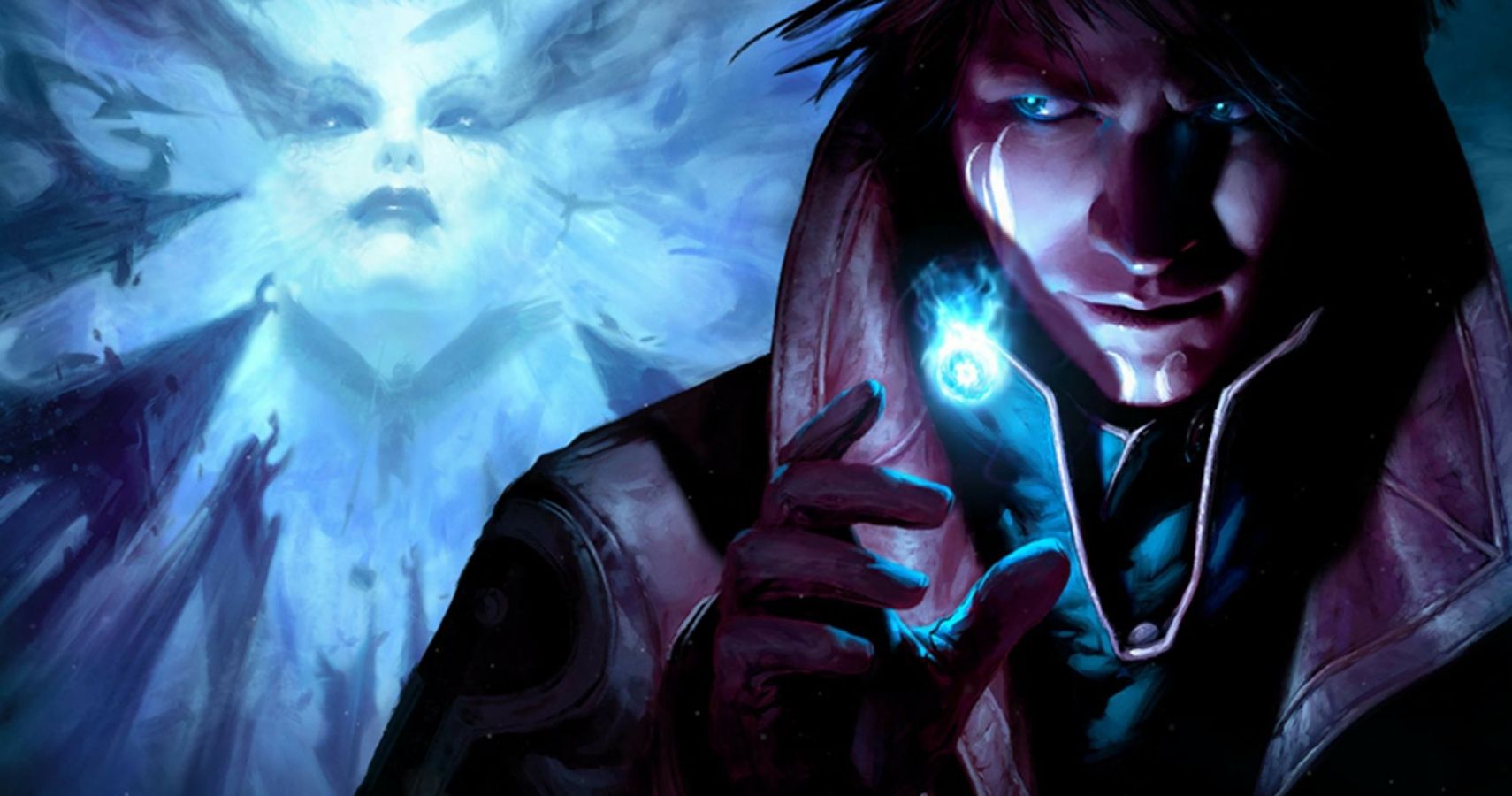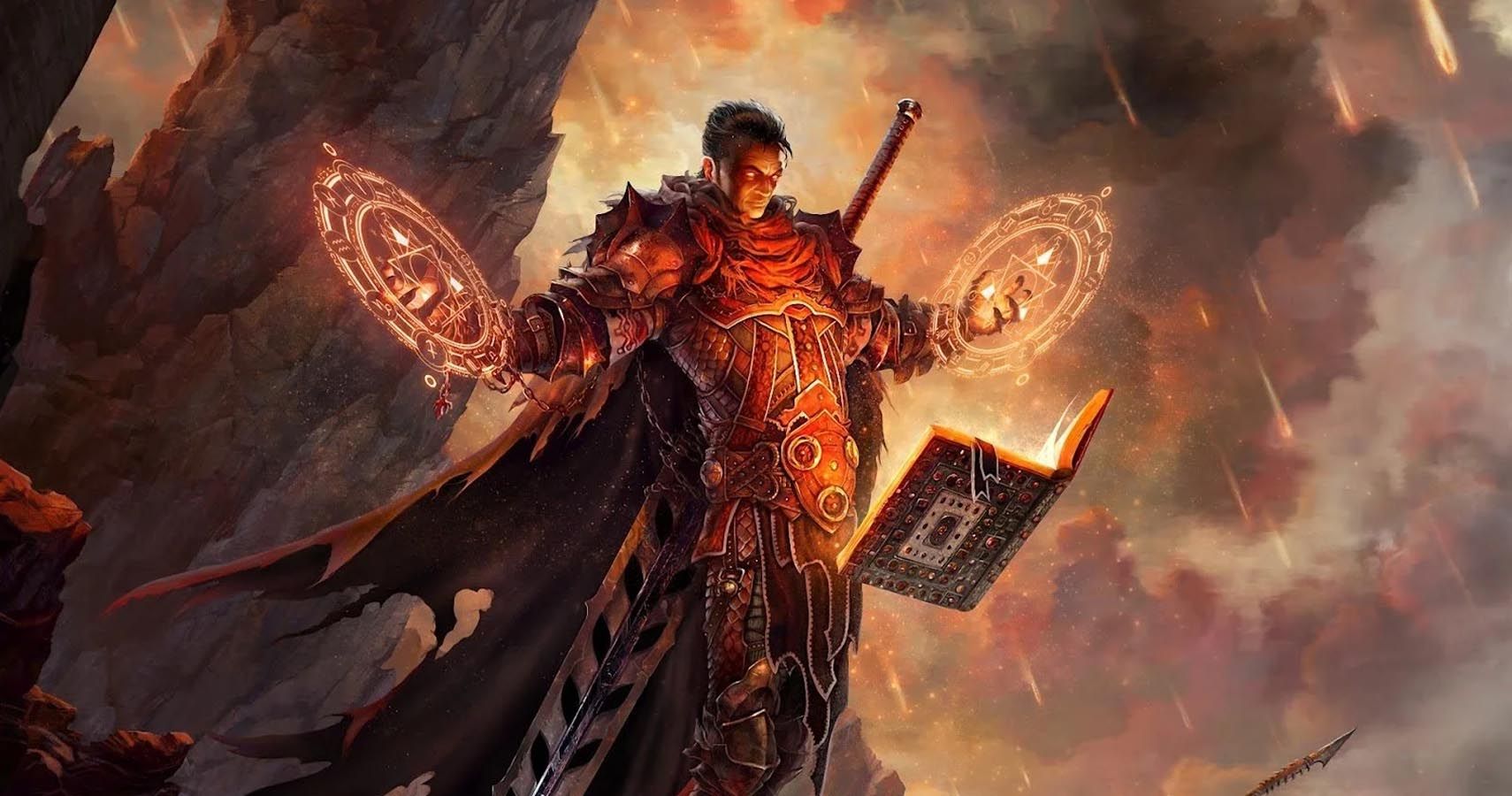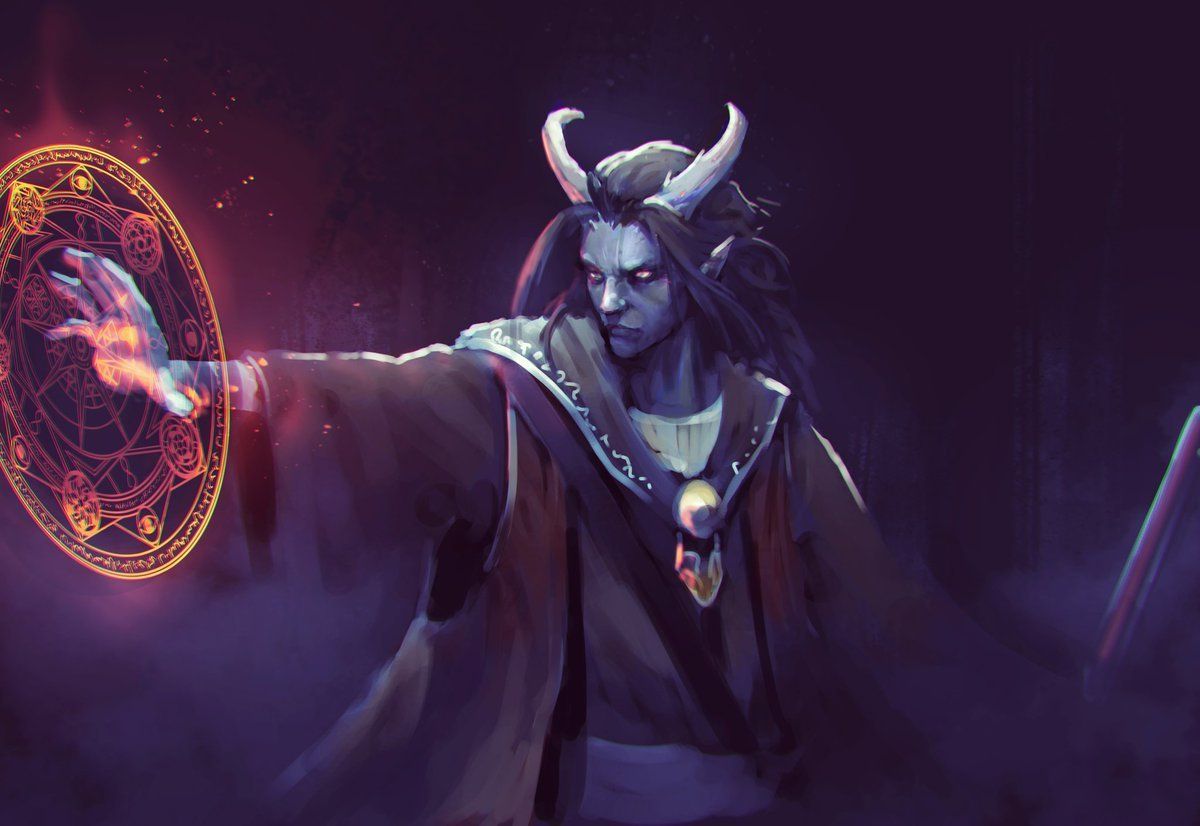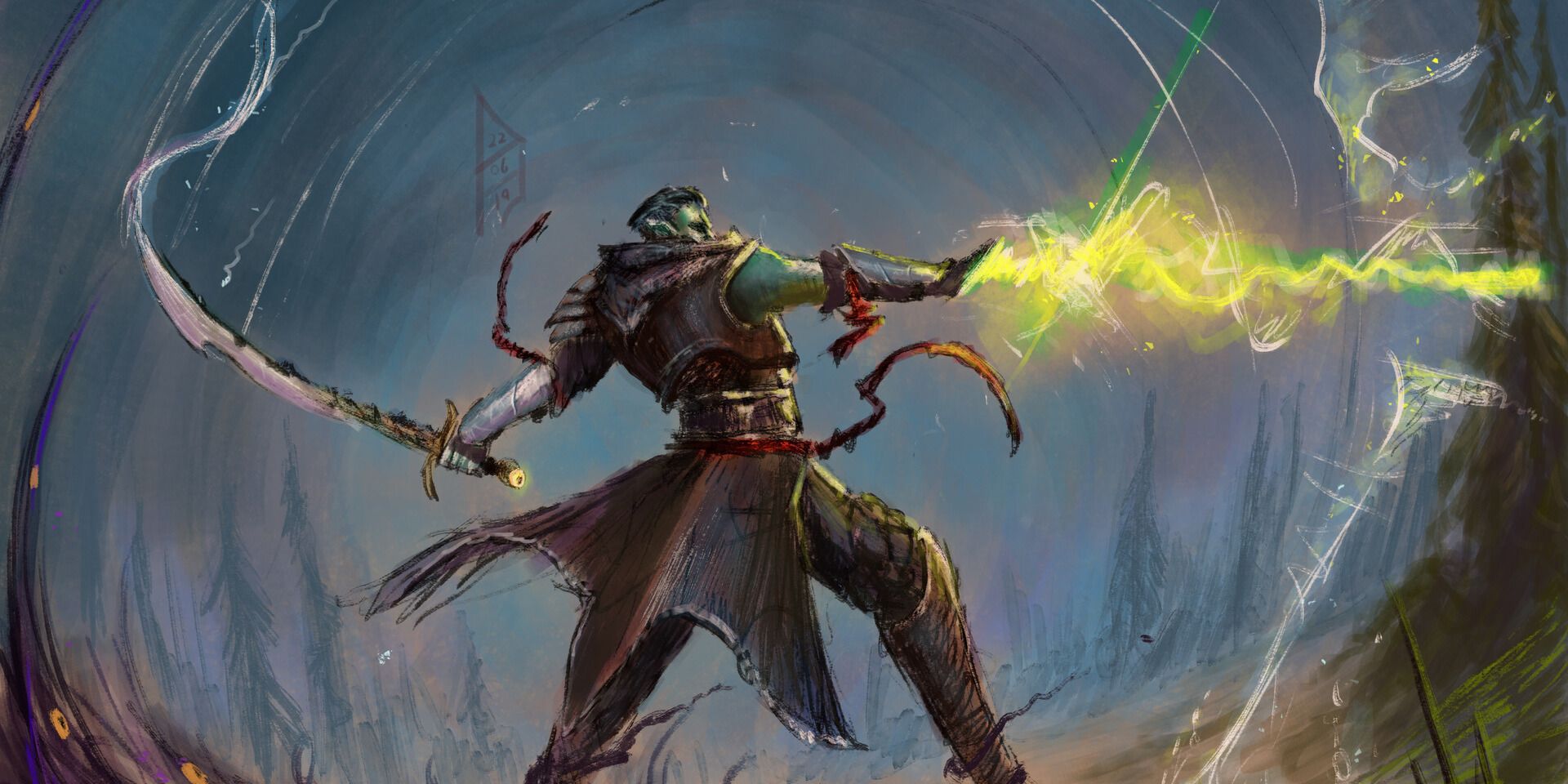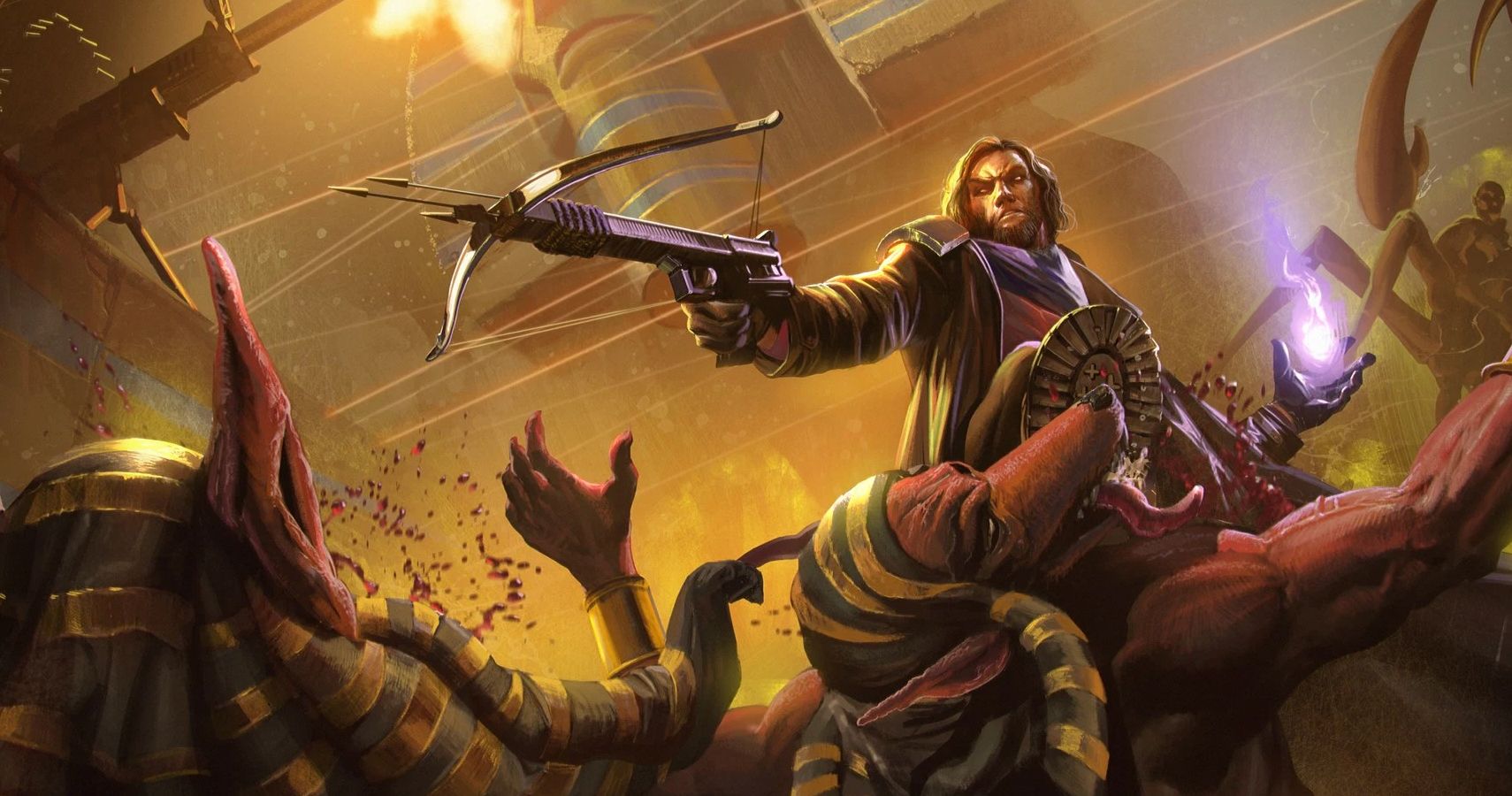In 5th Edition Dungeons & Dragons, subclasses let players add some flair and personality to the standard classes. They are great for homebrewers since they let players create character options with a strong theme without making a full class progression. However, there are certain things to consider when homebrewing subclasses for different classes. Here are some tips for making a Warlock Patron, either for personal use or publication.
Spells On A Theme
Warlocks get an expanded spell list as part of their subclass. This can be a strong source of flavor at every other level of the class’s progression, giving warlocks options that fit the theme of their patron. Creators should make sure these spells connect to the flavor of the subclass.
Warlocks can only use their spellcasting for spells up to 5th level. However, the warlock spell list goes through 9th level, since warlocks can cast higher level spells through their mystic arcanum ability. If a higher-level spell fits perfectly with the patron’s theme, it can be added to the spell list. Creators should not focus too much on higher-level spells, though, since warlocks can only learn one 6th, 7th, 8th, and 9th-level spell each, ever.
Warlocks Are Marathon Casters
It is important to remember that warlocks can cast spells more often as long as the party takes time to take a few short rests a day. Creators should make sure not to add any spells that would become annoying or overpowered if cast again and again. For example, Animate Dead has a 24-hour duration and no concentration requirement, meaning that putting it in the warlock spell list would let them have a permanent army of zombies under their control.
Otherwise, creators can consider including potentially overpowered spells as eldritch invocation options with a hard limit on how many times they can be cast per day. In addition, spells that are already present as invocations should not be included in spell lists.
Avoid The Eldritch Nuke
Due to limited spell options, warlocks rely heavily on cantrips. Luckily, they have the best cantrip in the game, Eldritch Blast. It has the highest damage die of any cantrip and deals force damage, which nearly nothing has resistance or immunity to. There are also many eldritch invocations that improve aspects of Eldritch Blast, such as range or damage.
Because of this, creators should avoid introducing abilities and eldritch invocations that further improve Eldritch Blast. Increasing the utility of the cantrip too much can increase a warlock’s damage per turn to the point of unbalancing the class.
Understand Warlock Builds
There are many ways to build a warlock, since warlocks have major class decision points that are separate from the subclass, such as the pact boon. Although a subclass might work better with certain warlock builds than others, ideally a player should be able to play any subclass with any build and not lag behind other characters of the same level. Understanding how different warlock builds work is important in building a subclass that works with all of them.
Creators should keep these guidelines in mind, and make sure they don’t make the subclass too strong or too weak at any given level. As for coming up with the flavor for the archetype, they’ll have to use their imagination for that.

